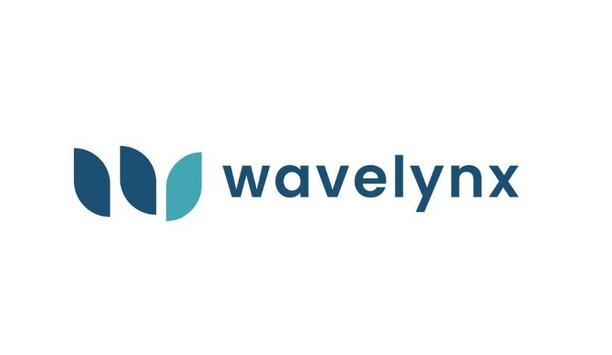Tyco Fire Protection Products - Experts & Thought Leaders
Latest Tyco Fire Protection Products news & announcements
Wavelynx Technologies, a trailblazer in advanced, secure, and versatile reader and credential solutions, announced the launch of its Middle East and North Africa (MENA) operations, appointing Vishal Khullar, Director of Business Development, as Head of the region. Wavelynx's secure and interoperable access control solutions enable businesses to modernise their authentication technology at a pace that suits their needs. Tailored access control solutions "At Wavelynx, we're committed to providing our customers, including those in the MENA region, with tailored access control solutions," said Rob Lydic, President of Wavelynx Technologies. He adds, "Our advanced technology helps businesses secure their facilities and embrace the opportunities of a digital future." Access in commercial settings These systems play a vital role in enhancing property security and preventing unauthorised access The MENA region is experiencing a surge in demand for access control systems due to growing urbanisation. As cities expand and security concerns rise, access control systems are becoming essential for managing access in commercial settings. These systems play a vital role in enhancing property security and preventing unauthorised access, making them a priority for companies seeking to protect employee safety, data, and assets. Ethos readers, Configure, and Wallet Solution Wavelynx is strategically positioned to deliver advanced access control solutions tailored to the diverse needs of the MENA region’s commercial real estate, hospitality, education, and healthcare sectors. The company’s innovative technologies are designed to enhance security measures, streamline operations, and create safer environments. These include their state-of-the-art Ethos readers, Configure, and the Wavelynx Wallet Solution, which together offer streamlined security management, improved operational efficiency, and a modern approach to access control. Enhancing user experience To deliver tailored solutions that meet the unique needs of the MENA region, Wavelynx is collaborating with partners, including ACRE, AMAG, Genetec, and Tyco/JCI. By leveraging their expertise and market knowledge, Wavelynx is helping clients seamlessly integrate existing systems into the company’s open and secure access control platform, enhancing user experience and reducing operational costs.
During the 51st General Assembly of Euralarm, the European association representing the fire safety and security industry, the members have chosen Jon Könz as new President of Euralarm. He succeeds Martin Harvey, who was President for the past three and half years. Before being elected President, Jon Könz was Chair of the Services Section of Euralarm. He is Head of Industry Affairs, at Siemens Smart Infrastructure. Euralarm’s 2021 General Assembly The 2021 General Assembly was held in Brussels, Belgium, where the outgoing President praised the work that was done in fostering internal communications, in times when more and more people were bound to their (home) office and much of the communications takes place via online communication platforms. Nevertheless, the Euralarm association succeeded in aligning opinions and developing clear priorities, shared across the whole scope of the industries, represented by Euralarm, including product and system manufacturers, installers, integrators, service providers, and national associations, from all over Europe. New members added to Euralarm Having added more than 10 new members, over the past years, Euralarm now represents a bigger share of the industry Having added more than 10 new members, over the past years, Euralarm now represents a bigger share of the industry, allowing the association to exert more influence at European level. Under Euralarm’s umbrella model, different industry disciplines are represented by distinct sections with separate membership, but they work together in their high-level dialogue with institutional players and other European stakeholders. The General Assembly also elected Anja Schäfer (JCI) as Chair of the Marketing Committee, whereas Dominique Taudin (Carrier) will remain as Chair of the Advocacy Committee. Section Chairs and Vice Chairs elected On the following day, Section Chairs and Vice Chairs were elected or re-elected, by their respective section members. Neil Budd (FIA) was elected Vice Chair of the Fire Section, Milan Ceeh (AGA) will be the Acting Chair of the Security Section, with Oscar Feijo Jimenez (Verisure) as the Vice Chair. Robert Thilthope (FIA) will succeed Jon Könz as Chair of the Services Section, with Victoria Ferrera Lopez (Verisure) as Vice Chair. Alan Elder (JCI) and Tornbjörn Laursen will remain as Chair and Vice Chair of the Extinguishing Section.
Insights & Opinions from thought leaders at Tyco Fire Protection Products
The healthcare market is rife with opportunity for security systems integrators. Hospitals have a continuous need for security, to update their systems, to make repairs, says David Alessandrini, Vice President, Pasek Corp., a systems integrator. “It’s cyclical. Funding for large projects might span one to two years, and then they go into a maintenance mode. Departments are changing constantly, and they need us to maintain the equipment to make sure it’s operating to its full potential.” The experience of Pasek Corp. is typical of the opportunities available for security integrator companies in the healthcare vertical. A single large hospital system can supply a dependable ongoing source of revenue to integrator companies, says Alessandrini. Hospitals are “usually large enough to provide enough work for several people for an extended length of time.” Healthcare customers in Pasek’s service area around Boston provide the potential for plenty of work. “We have four major hospitals, each with in excess of 250 card readers and 200 cameras, in the Boston area,” Alessandrini says. One appeal of the healthcare market for North Carolina Sound, an integrator covering central North Carolina, is the breadth of possible equipment they can sell into the healthcare market, including access control and video, of course, but also other technologies, such as audio-video systems in a dining room. North Carolina Sound has also installed sound masking in some areas with waiting rooms to protect private patient information from being overheard. Locking systems on pharmaceutical doors are another opportunity. Data capture form to appear here! IP based networked video systems A facility’s IT folks must be convinced an IP solution will function seamlessly on their network Among North Carolina Sound’s customers is Wayne Memorial Hospital, Goldsboro, N.C., which uses about 340 video cameras, with 80 percent or more of them converted to IP. The hospital is replacing analogue with IP cameras as budget allows, building network infrastructure to support the system. The healthcare market tends to have a long sales cycle; in general, sales don’t happen overnight or even within a month or two. In fact, the period between an initial meeting with a healthcare facility and installation of a system could stretch to a year or longer. A lot happens during that time. Healthcare systems involve extensive planning, engineering, and meetings among various departments. Physical security systems that involve the information technology (IT) department, as do most systems today, can be especially complex. Installation of networked video systems based on Internet protocol (IP) requires deep and probing discussions with the IT team about how a system fits into the facility’s network infrastructure. A facility’s IT folks must be convinced an IP solution will function seamlessly on their network. Compatible with the network They must vet the technology to ensure the devices and solutions will be compatible with the network, and must sign off on technology choices. And even more important is determining if the security system will adhere to cyber security requirements of the facility. A complete solution that integrates nearly any system that lives on or uses a facility’s network is ultimately what the healthcare vertical is moving toward, says Jason Ouellette, General Manager – Enterprise Access Control & Video, Johnson Controls. Healthcare security professionals are early adopters of technology, implementing the best technology available” “We are hearing more and more from customers across industries that they want to be able to use their security systems and devices for more than just security: they want added value,” says Ouellette. Many want to use access control, video surveillance and other data sources to assess their business operations and/or workflows with the goal of improving efficiency. Upgrade cost-effectively Historically, three factors have prevented many organisations from moving forward with new technologies: lack of money, proprietary systems, and the need to “rip and replace” large parts of the installed systems, says Robert Laughlin, CEO and Chairman, Galaxy Control Systems. "Today, while funding is almost always a limiting factor at some level, the progression of industry standards and ‘open’ systems has made a big positive impact on the ability of organisations to upgrade cost-effectively,” he says. Despite any obstacles, healthcare customers generally welcome new innovations. “I would say healthcare security professionals in general are early adopters of technology and like to implement the best technology available,” says Jim Stankevich, Global Manager – Healthcare Security, Johnson Controls/Tyco Security Products. “For most, rapid implementation is limited by budgets and available funding." Read parts one and three of our heathcare mini series here and here.
If anyone tells you that the use of Mass Notification Systems (MNS) is a new trend, it is likely that they do not fully understand it. You have been impacted by mass notification your whole life. Surprised? Every time there is a fire drill at an elementary school, or a bell chimes noon or a blinking light announces a snow-related parking ban, an MNS is being deployed. Ultimately, mass notification is just mass communications. What has changed is the distribution methodology, the granularity and specificity of the message, and the ability to customise it to individual recipients or groups. The growing need for mass communications Our capacity to communicate vastly improved through the 80s and 90s; 1G analogue in 1983 was followed by 2G digital in 1990, paving the way for text messaging and IBM’s Simon, the first smart phone in 1993. Digital cable connected to nearly seventy million people by the end of the 20th century. By 1995, wide-scale commercialisation of the internet had begun, with social media and instant online chats prevailing through the early 2000s.Advances in communications integration can be traced to the communications failures experienced in the attack on the World Trade Center So when did the genesis of modern mass notification occur? The problem garnered little national attention until the 1995 Murrah Federal Building bombing and the 1999 Columbine High School shooting, which saw issues with the immediate and post-crisis victim response. The tipping point was 9/11. Advances in communications integration and interoperability can be traced to the communications failures experienced by responders to the attack on the World Trade Center. These failures went beyond those traditionally involved in a crisis. The 9/11 Commission report states: “the ‘first’ first responders on 9/11, as in most catastrophes, were private sector civilians. Because 85 percent of our nation’s critical infrastructure is controlled not by government, but by the private sector, private-sector civilians are likely to be the first responders in any future catastrophe. For that reason, we have assessed the state of private sector and civilian preparedness in order to formulate recommendations to address this critical need.” Managing the disaster life cycle Communications failures were tied inexorably to governmental and civilian command and control failures with frustration spreading all the way to the White House. President George Bush issued Homeland Security Presidential Directive 5 (HSPD-5): “to prevent, prepare for, respond to, and recover from terrorist attacks, major disasters, and other emergencies, the United States Government shall establish a single, comprehensive approach to domestic incident management.” The result was the National Incident Management System (NIMS). NIMS is intended to help manage the disaster life cycle and meet the challenges of timely emergency communication. The NIMS provides a comprehensive approach to incident management to meet the challenges of timely emergency communication to civilians and emergency services Most of the fire detection industry views Mass Notification through the "standards" looking glass, with NFPA 72 Chapter 24, UL2572 and the Defence Department UFC 4-021-01 as the primary players. The UFC standard best exemplifies the most commonly recognised MNS definition in its introduction: "Mass notification provides real-time information and instructions to people in a building, area, site, or installation using intelligible voice communications along with visible signals, text, and graphics, and possibly including tactile or other communication methods.Through distributed messaging systems, MNS can also broadcast alert notifications and evacuation route directions to targeted areas "The purpose of mass notification is to protect life by indicating the existence of an emergency situation and instructing people of the necessary and appropriate response and action.” While there is nothing wrong with that definition, it is often misinterpreted. This stigma unintentionally creates operational silos. Mass notification isn’t just for your building, your campus, or your people. In fact, the greatest value of a well-architected mass notification system is that it can deliver communications to large diverse groups of people sharing a commonality. Holistic mass notification system While many people associate MNS with fire alarms and text message alerts, today’s systems incorporate numerous other modes of communication from an email notification to strobe lights or automated phone calls, similar to a reverse 911 call. For larger open campuses, an MNS could include a loud speaker, which can sound a siren notification or even an automated message. Through distributed messaging systems, MNS can also broadcast alert notifications and evacuation route directions to targeted areas in the event of an emergency. For example, in an active shooter situation, leaving a building may actually put more people in harm’s way in some cases. Depending on the situation, it may be safer for occupants to move to a different floor or area in the building. The same could be said about a weather-related issue, where a display board or email notification would share an alert to take shelter in a basement due to a tornado. The 21st century mass notification system will be holistic, highly configurable, intuitive and interactive enabling two-way multi modal communication. It will be inherently network-driven and adaptable to diverse individual and group perceptions, behaviours and needs.
Using artificial intelligence (AI) to automate physical security systems
DownloadA modern guide to data loss prevention
Download7 proven solutions for law enforcement key control and asset management
DownloadThe truth behind 9 mobile access myths
DownloadAccess control system planning phase 2
Download










